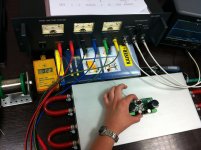P.S. where (and how) to measure output bias current?
The simplest way with an A-meter in series to positive supply wire, it should show collective ie. total 280 mA (220 mA output stage, 60 mA the rest of the circuit) DC current. Use 10 A DC current range and correspondent 10 A plug on multimeter. 😉
Thanks!
I am just checking and adjusting for DC offset and VAS bias current, now I have another question:
For adjusting VAS bias current, is it O.K. to only measure between TP1 and TP2, or should I also check between TP3 and TP4?
I am just checking and adjusting for DC offset and VAS bias current, now I have another question:
For adjusting VAS bias current, is it O.K. to only measure between TP1 and TP2, or should I also check between TP3 and TP4?
TP1-TP2 have the same function as TP3-TP4 so it doesn't matter which one you choose, one measurement is enough. TP1 is on +VDC potential, TP4 on -VDC, so the measurement to be even easier you can connect mV meter's positive probe to +VDC by clamp and handle only the negative probe to TP2 and set to 120 mV which correspond to 12 mA of VAS bias current.
I did solder 2 thin wires to TP1 and TP2, that was in my opinion the safest option.
Did one amp (mono) until now. Directly after powering up it shows around 11 mA and it creeps to approx. 15 mA after quite some time of idle. (approx. 15 minutes). 12 mA is reached after approx. 30 sec - 1 minute. DC bias is 0 all the time. So I assume it's biased nicely.
How important it is to check and correct output bias current? (didn't touch the setting since buying the amp from you)
Did one amp (mono) until now. Directly after powering up it shows around 11 mA and it creeps to approx. 15 mA after quite some time of idle. (approx. 15 minutes). 12 mA is reached after approx. 30 sec - 1 minute. DC bias is 0 all the time. So I assume it's biased nicely.
How important it is to check and correct output bias current? (didn't touch the setting since buying the amp from you)
Here I am again...
It's a bit hard in my opinion to set VAS Bias as after switching on the amp, it creeps up quite quickly, specially the first 5 - 10 seconds. When should it read 120 mV, after 1 second, after 5 seconds, after 10 seconds? As I have set it now, it reads approx. 120 mV after 2 - 3 seconds after switch on and it creeps to 130 mV quite quickly, after that it creeps less quickly.
Please let me know if this is fine. If yes, I will setup the other amp the same.
Thanks,
Mark.
It's a bit hard in my opinion to set VAS Bias as after switching on the amp, it creeps up quite quickly, specially the first 5 - 10 seconds. When should it read 120 mV, after 1 second, after 5 seconds, after 10 seconds? As I have set it now, it reads approx. 120 mV after 2 - 3 seconds after switch on and it creeps to 130 mV quite quickly, after that it creeps less quickly.
Please let me know if this is fine. If yes, I will setup the other amp the same.
Thanks,
Mark.
Hi Mark
From powering on VAS bias goes slowly up from 12 mA (ie. 120 mV between TP1-TP2) to 15 mA (ie. 150 mV between TP1-TP2) and stays there. That is completely normal, meaning only 3 mA difference from cold start to normal operating conditions.
VAS transistors are very happy to have working point at Ic=15 mA since hFE is optimal and linear at that point.
If you need auto bias circuit, which is completely meaningless here, than we would need OP amp control circuit with some low pass filtering etc.
First One is simple but highly effective amplifier, especially in SQ domain. Look to the first post for technical data.
As you can see from the picture above, production uses coolant regulated heatsink, having 23°C, so they simulate powering up conditions all the time. This enables them to save time and calibrate more modules per day, since they don't have to wait for the modules to thermally stabilize.
As you don't have this option I suggest to set VAS bias to 15 mA when heatsink is thermally stabilized in app. 20 min.
L.C.
From powering on VAS bias goes slowly up from 12 mA (ie. 120 mV between TP1-TP2) to 15 mA (ie. 150 mV between TP1-TP2) and stays there. That is completely normal, meaning only 3 mA difference from cold start to normal operating conditions.
VAS transistors are very happy to have working point at Ic=15 mA since hFE is optimal and linear at that point.
If you need auto bias circuit, which is completely meaningless here, than we would need OP amp control circuit with some low pass filtering etc.
First One is simple but highly effective amplifier, especially in SQ domain. Look to the first post for technical data.
As you can see from the picture above, production uses coolant regulated heatsink, having 23°C, so they simulate powering up conditions all the time. This enables them to save time and calibrate more modules per day, since they don't have to wait for the modules to thermally stabilize.
As you don't have this option I suggest to set VAS bias to 15 mA when heatsink is thermally stabilized in app. 20 min.
L.C.

So far we are nearly approaching 200th module and for that number two assembeld DC Sense modules are reserved and will be included as a gift. 
Best regards L.C.

Best regards L.C.

Thanks LC! That's probably the best thing to do for me, having the amp powered up for some time and set for 15 mA. 🙂
I thought LC effort regarding calibration F1 was to ensure calibration already took place in a more precise manner then performed with 20 euro multimeters?
Not true. The aim of calibration in production is to set the module within the limits of technical specs. They use analog meters as seen from the pic, so 20 EUR multimeters could be more precise, but analog meters have different role here.
If DC offset is -5 mV or + 5 mV that is completely irrelevant for proper amp operation. If someone would like to set it to 0,1 mV it is still possible, I did it myself a lot of times, but than you have to use FLUKE.
Again, for proper amplifier operation it is complete nonsense to have DC servo or autobias circuit if amplifier itself operates within +/- 5 mV DC offset and 15 mA (+/-2 mA) VAS bias. DC servo and auto bias usually have its sound signature and that is worse situation than their main purpose.
If DC offset is -5 mV or + 5 mV that is completely irrelevant for proper amp operation. If someone would like to set it to 0,1 mV it is still possible, I did it myself a lot of times, but than you have to use FLUKE.
Again, for proper amplifier operation it is complete nonsense to have DC servo or autobias circuit if amplifier itself operates within +/- 5 mV DC offset and 15 mA (+/-2 mA) VAS bias. DC servo and auto bias usually have its sound signature and that is worse situation than their main purpose.
Also because the PCB only need input/output/power/heatsink it must be good to know module is tested before shipping sometimes very long distance.Not true. The aim of calibration in production is to set the module within the limits of technical specs. They use analog meters as seen from the pic, so 20 EUR multimeters could be more precise, but analog meters have different role here.
If DC offset is -5 mV or + 5 mV that is completely irrelevant for proper amp operation. If someone would like to set it to 0,1 mV it is still possible, I did it myself a lot of times, but than you have to use FLUKE.
Again, for proper amplifier operation it is complete nonsense to have DC servo or autobias circuit if amplifier itself operates within +/- 5 mV DC offset and 15 mA (+/-2 mA) VAS bias. DC servo and auto bias usually have its sound signature and that is worse situation than their main purpose.
To calibrate to 0,1mV precision as you did lot lot of times, well isn't it the satisfying care a diy can give such a amp ...😀
Also because the PCB only need input/output/power/heatsink it must be good to know module is tested before shipping sometimes very long distance.
To calibrate to 0,1mV precision as you did lot lot of times, well isn't it the satisfying care a diy can give such a amp ...😀
Modules are calibrated and power tested at 20 kHz 100Wrms/4 Ohm. 😉
0,1 mV DC offset is in preamp's domain and it was just tour de force test no deeper meaning here. 😀
Hi Cat. How are my Black Mamba's .
Your Black Mamba is alive and looking dangerous. Over the weekend will be playing music and be send to you on Monday. 😉
All chassis sold. 😀
One assembled First One sent to UK, one to Sweden, one to Singapore, one will be send to you and few locals already in production. 😎
Local Multimedia Show is taking place in Ljubljana from 3.-5.10., where First One V1.3 will be unveiled and presented, stay tuned for comments. 🙂
L.C.

Just received my modules and black chassis.First comment regarding packaging
and quality of the chassis is that they are first class.
I hope that in a few days I'll have it assembled and compared with my other SSA
amps.
Thanks a lot LC
Mikvous
and quality of the chassis is that they are first class.
I hope that in a few days I'll have it assembled and compared with my other SSA
amps.
Thanks a lot LC
Mikvous
And yes, the FO arrived to Sweden in perfekt condition.
It looks like a dream and sounds like heaven.
It's very hard not to get emotional about this amp.
My system is not in action so I took FO to my Audiobuddy.
Short story is that after listening to a couple of songs his McIntosh
is up for sale. Mc is 5 times the price of FO .
His words: " I can't believe how FO slaughtered the Mc ".
We listened for 6 hours last night.
His system is Audio Aero, Ear, Clear Audio, Magnepan,Sablon Audio.
Ladies and gentlemen : Slovenia 12 points
Big thanks to Andrej and Andrej
Cheers,
Mikko
It looks like a dream and sounds like heaven.
It's very hard not to get emotional about this amp.
My system is not in action so I took FO to my Audiobuddy.
Short story is that after listening to a couple of songs his McIntosh
is up for sale. Mc is 5 times the price of FO .
His words: " I can't believe how FO slaughtered the Mc ".
We listened for 6 hours last night.
His system is Audio Aero, Ear, Clear Audio, Magnepan,Sablon Audio.
Ladies and gentlemen : Slovenia 12 points
Big thanks to Andrej and Andrej
Cheers,
Mikko
Khhm, khhm  well to be clear this was not payed advertisement. 🙂
well to be clear this was not payed advertisement. 🙂
Thanks for the opinion Mikko. Enjoy. 😉
 well to be clear this was not payed advertisement. 🙂
well to be clear this was not payed advertisement. 🙂Thanks for the opinion Mikko. Enjoy. 😉
First One Black Mamba
Finally Black Mamba swings around, looking dangerously on the hood
Finally Black Mamba swings around, looking dangerously on the hood

Attachments
-
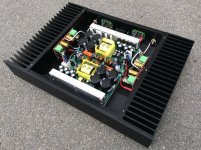 First One Black Mamba 1.jpg818.3 KB · Views: 1,073
First One Black Mamba 1.jpg818.3 KB · Views: 1,073 -
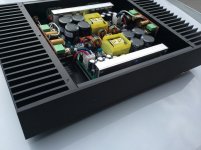 First One Black Mamba 3.jpg408.4 KB · Views: 954
First One Black Mamba 3.jpg408.4 KB · Views: 954 -
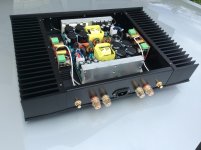 First One Black Mamba 4.jpg370 KB · Views: 927
First One Black Mamba 4.jpg370 KB · Views: 927 -
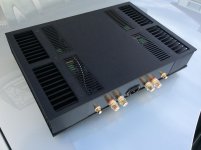 First One Black Mamba 5.jpg331.2 KB · Views: 896
First One Black Mamba 5.jpg331.2 KB · Views: 896 -
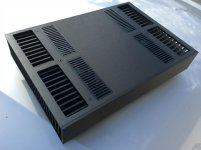 First One Black Mamba 9.jpg341.7 KB · Views: 860
First One Black Mamba 9.jpg341.7 KB · Views: 860 -
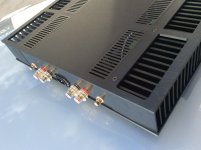 First One Black Mamba 8.jpg384.5 KB · Views: 417
First One Black Mamba 8.jpg384.5 KB · Views: 417 -
 First One Black Mamba 7.jpg350.3 KB · Views: 426
First One Black Mamba 7.jpg350.3 KB · Views: 426 -
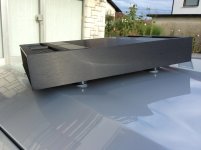 First One Black Mamba 6.jpg321.1 KB · Views: 481
First One Black Mamba 6.jpg321.1 KB · Views: 481
Last edited:
- Home
- Vendor's Bazaar
- First One - mosFET amplifier module
